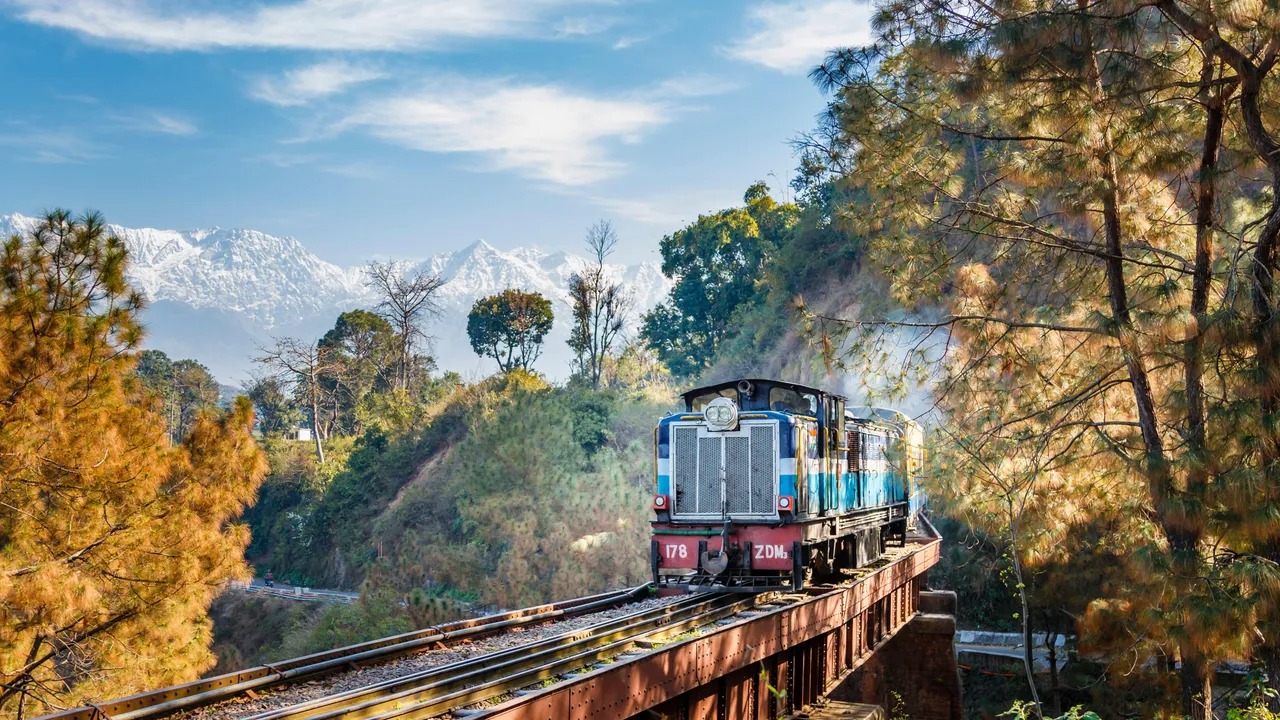The Rail and Rhythm, an inseparable duo that has shaped the world of transportation and music alike. In this chapter, we delve into the harmonious relationship between rail systems and the rhythm of everyday life. From the early days of steam-powered locomotives to the sleek high-speed trains of today, railways have not only revolutionized transportation but have also inspired musical expressions that capture the essence of the rail's rhythmic motion.
1. The Birth of Railways:
The birth of railways can be traced back to the early 19th century when the world experienced a transformative period of industrialization. Steam-powered locomotives emerged as the pioneers of this new mode of transportation. The rhythmic chugging of the engines and the clickety-clack of the wheels on the rails became the heartbeat of this era. The railways connected cities, facilitated trade, and brought people together, all while setting the stage for a new musical genre.
2. Railways and Folk Music:
As railways expanded across continents, they became a source of inspiration for folk musicians. Songs like "The Wabash Cannonball" in the United States and "The City of New Orleans" by Steve Goodman captured the spirit of rail travel, evoking images of vast landscapes, adventure, and the longing for home. These songs embodied the rhythm of the trains and the stories of the people who rode them, preserving the history and culture of a rapidly changing world.
3. The Golden Age of Railways:
The 19th and early 20th centuries marked the golden age of railways. Magnificent steam locomotives, luxurious passenger cars, and grand stations defined this era. The rhythmic symphony of wheels on the tracks echoed through the countryside. Composers like Richard Strauss, with his composition "Eine Alpensinfonie," and Sergei Prokofiev, with "The Steel Step," captured the power and grandeur of trains through orchestral pieces that conveyed the energy and movement of locomotives.
4. Jazz: The Rhythm of the Rails:
In the early 20th century, jazz emerged as one of the most influential musical genres, and it owed much of its rhythmic complexity to the railways. The syncopated rhythms, improvisation, and call-and-response patterns mirrored the dynamic interchange between trains and tracks. Jazz musicians embraced the sounds of the rail, incorporating the percussive elements of train wheels and horns into their compositions. Pieces like Duke Ellington's "Daybreak Express" and John Coltrane's "Blue Train" embodied the spirit of locomotion, capturing the excitement and energy of rail travel.
5. High-Speed Trains and Electronic Music:
As technology advanced, so did the railways. High-speed trains, such as the Japanese Shinkansen or the French TGV, emerged, setting new standards for speed and efficiency. Alongside these advancements, electronic music gained popularity. The futuristic sounds and repetitive beats of electronic music genres, such as techno and trance, echo the relentless pace and precision of high-speed rail travel. DJs and producers like Jeff Mills and Kraftwerk incorporated train sounds and rhythms into their music, creating a sonic fusion of man and machine.
6. The Railways in Modern Music:
In the 21st century, railways continue to inspire musicians across various genres. From indie rock to hip-hop, references to trains and railways can be found in lyrics that evoke a sense of movement, longing and adventure. Artists like Mumford & Sons with their song "Roll Away Your Stone" and hip-hop artist A$AP Rocky with "Long Live A$AP" incorporate train metaphors and imagery to convey themes of freedom, escape, and personal journeys.
Furthermore, the rail and rhythm connection extends beyond the lyrical aspect of music. The rhythmic patterns and vibrations experienced during train travel have inspired experimental and avant-garde musicians to explore unconventional sounds and compositions. They utilize field recordings of trains, the Doppler effect of passing locomotives, and the ambient sounds of railway stations to create immersive sonic experiences that blur the boundaries between music and environmental noise.
In addition to inspiring musical expressions, railways have become venues for live performances themselves. The concept of "music on board" has gained popularity, where musicians perform live concerts on trains, providing passengers with a unique and intimate musical experience while traveling from one destination to another. These performances range from classical concerts to jazz ensembles, showcasing the diverse ways in which railways and music converge.
The Rail and Rhythm, a timeless connection that transcends borders and cultures, continues to captivate artists and audiences alike. Through the rhythmic motion of trains, the clatter of wheels on tracks, and the stories of people on their journeys, railways have become a source of inspiration, weaving their way into the tapestry of musical expression. Whether through folk, jazz, electronic, or contemporary genres, the rail and rhythm remain intertwined, reminding us of the power of transportation to ignite the creative spirit and shape the melodies of our lives.

Comments